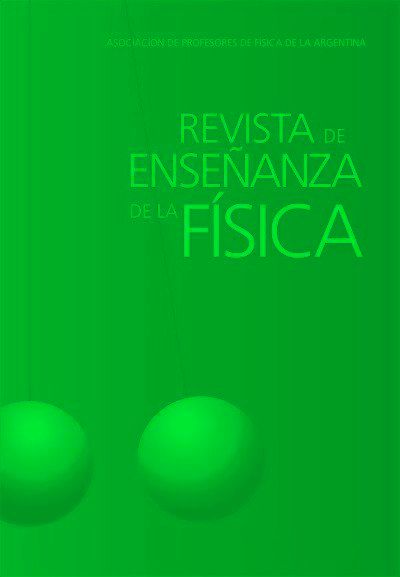New technologies for teaching Physics: interactive videos with H5P
DOI:
https://doi.org/10.55767/2451.6007.v33.n2.35198Keywords:
H5P, Interactive video, Adaptive content, Significant learning, Physical opticsAbstract
This work refers to the development of interactive videos using the H5P tool, available on the Moodle platform, and its implementation
for the teaching of Physical Optics in Physics II subject of the engineering careers at the National University of San Juan. The H5P
application allows the creation of resources with enriched content, which facilitates differentiated learning, since the educational experience is not linear but adaptive. With the development of interactive digital resources and their subsequent implementation in the
virtual classroom, the aim was to promote meaningful learning and the active participation of students in the construction of their own
learning.
References
Chong, K., Wong, K-L., Leung, C-W., Ting, F. (2019). Flipped classroom with interactive videos in first year undergraduate
physics course in Hong Kong. SPIE Proceedings 11143, Decimoquinta Conferencia sobre Educación y Formación en Óptica
y Fotónica: ETOP 2019, 1114335 (2 Julio 2019), doi: 10.1117/12.2523439
H5P.org, (2021). Instalación y configuración. Recuperado de: https://h5p.org/installation
Joubel, (2013). Video interactivo. Recuperado de: https://h5p.org/interactive-video
McDermott, L. (1991). Millikan Lecture (1990): What we teach and what is learned – Closing the gap. American Journal
of Physics, 59(4), 301-315. doi: 10.1119/1.16539
McDermott, L. (2001). Oersted Medal Lecture 2001: ‘‘Physics Education Research—The Key to Student Learning’’. American Journal of Physics, 69(11), 1127-1137. doi: 10.1119/1.1389280
MoodleDocs, (2019). Actividad Contenido Interactivo - H5P. Recuperado de: https://docs.moodle.org/all/es/Actividad_Contenido_Interactivo_-_H5P#Vista_general
MoodleDocs, (2021). H5P. Recuperado de: https://docs.moodle.org/all/es/H5P
Redish, E. (1994) The Implications of Cognitive Studies for Teaching Physics. American Journal of Physics, 62(9), 796-803.
doi: 10.1119/1.17461
Redish, E. (1999). Millikan Award Lecture (1998): Building a Science of Teaching Physics. American Journal of Physics 67,
562. doi: 10.1119/1.19326
Richtberg, S., Girwidz, R. (2019). Learning Physics with Interactive Videos – Possibilities, Perception, and Challenges. Journal of Physics: Conference Series 1287 012057. doi:10.1088/1742-6596/1287/1/012057
TSG Physics - MIT, (2012). Laser Diffraction and Interference. Youtube.com. Recuperado de: https://www.youtube.com/watch?v=9D8cPrEAGyc
UNNE Virtual, (s.f.) Tutoriales Moodle – La herramienta interactiva H5P. Virtual.unne.edu.ar. Recuperado de: https://virtual.unne.edu.ar/contingencia-covid19/tuto/Tutorial%20UV-h5p.pdf
Vallejo, A. y González, A., (2018). Presentaciones interactivas H5P. Repositorio Institucional de la UNLP. Recuperado de:
http://sedici.unlp.edu.ar/handle/10915/70116
Zhang, D. Zhou, L., Briggs, R., Nunamaker, J. (2006). Instructional video in e-learning: Assessing the impact of interactive
video on learning effectiveness. Information & Management, 43(1), 15–27, doi: 10.1016/j.im.2005.01.004
Zollman, D., Fuller, R. (1994). Teaching and Learning Physics with Interactive Video. Physics Today, 47(4), 41-47 (1994).
doi: 10.1063/1.881428
Downloads
Published
Issue
Section
License
Copyright (c) 2021 Adriana del Carmen Cuesta, María Natacha Benavente Fager Benavente Fager

This work is licensed under a Creative Commons Attribution-NonCommercial-NoDerivatives 4.0 International License.
Aquellos autores/as que tengan publicaciones con esta revista, aceptan los términos siguientes:Los autores/as conservarán sus derechos de copiar y redistribuir el material, bajo los términos estipulados en la Licencia de reconocimiento, no comercial, sin obras derivadas de Creative Commons que permite a terceros compartir la obra bajo las siguientes condiciones:
- Reconocimiento — Debe reconocer adecuadamente la autoría, proporcionar un enlace a la licencia e indicar si se han realizado cambios. Puede hacerlo de cualquier manera razonable, pero no de una manera que sugiera que tiene el apoyo del licenciador o lo recibe por el uso que hace.
- NoComercial — No puede utilizar el material para una finalidad comercial.
- SinObraDerivada — Si remezcla, transforma o crea a partir del material, no puede difundir el material modificado.
- Los autores/as podrán adoptar otros acuerdos de licencia no exclusiva de distribución de la versión de la obra publicada (p. ej.: depositarla en un archivo telemático institucional o publicarla en un volumen monográfico) siempre que se indique la publicación inicial en esta revista.
- Se permite y recomienda a los autores/as difundir su obra a través de Internet (p. ej.: en archivos telemáticos institucionales o en su página web) antes y durante el proceso de envío, lo cual puede producir intercambios interesantes y aumentar las citas de la obra publicada. (Véase El efecto del acceso abierto).










